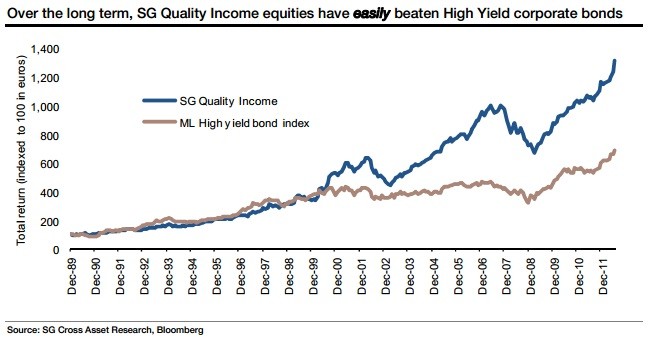Junk Bonds The Overlooked Investment for High Yield
Post on: 25 Июнь, 2015 No Comment

- November 17, 2014
- SHARE THIS
Even with the promise of the Fed raising interest rates soon. high yield can be tricky to find in the U.S. market. Of course, timing is bad right now for municipal bonds. Prices are poised to fall, creating an opportunity for you to jump in … but just not right now.
But not all bonds are bad. There is actually still one space in the bond market that I find extremely attractive. And it’s paying a solid 6.2% yield with prices set to climb …
October was a wild ride for stocks and bonds, with both experiencing a spike in volatility only to completely reverse course in late October.
While Treasury prices have continued to fall and stocks are still rallying, the odd man out is high yield bonds, or more commonly known as junk bonds. Investors don’t seem to know what to do with them — and therein lays a profit opportunity.
Let me explain …
Junk Bonds: More Stock Than Bond
Typically high yield bonds are traded more like stocks because they carry a significant amount of credit risk when compared to risk-free Treasurys. That explains why we saw the violent dip in October in the high-yield bond market, and the following rally as high yield bonds shadowed the movement of stocks. But then the high-yield bond market reversed course and traded lower shadowing the price of Treasury notes.
So which is it: Are high yield bonds more like stocks or Treasurys?
The reality is they are a little like both.
They are like bonds in the fact that they are safer than stocks. If you hold the bond until maturity, you will receive, in most cases, the par value and any interest payments.
But when it comes to trading opportunities, you should view high yield bonds more like stocks.
In a risk-on environment — a period when investors are willing to take on more risk — high yield bond prices rise and yields fall because high yield bonds are in demand. In a risk-off environment — a period when investors are risk adverse — high yield bond prices fall and yields rise. You see the same action in stocks. In a risk-off environment, traders will unload stock in favor of holding a cash position or U.S. Treasury bonds.
Understanding that high-yield bonds are treated more like stocks can help you realize the opportunity that exists right now.
Locking in High Yield
Since the high-yield bond market rally failed to keep pace with stocks, and followed the Treasury market instead, you still have an opportunity to lock in significant yield on an asset that will likely rise alongside stocks.
The best opportunity in the bond market, in a broad sense, is high-yield, non-investment grade emerging market debt.
In particular, I like the Market Vectors Emerging Markets High Yield Bond ETF (NYSEARCA: HYEM). It invests in emerging market corporate bonds that are rated Ba1 or lower by Moody’s and BB+ or lower by S&P and Fitch.
I know it sounds risky. But the reality is that it’s not all bad. High-yield emerging market corporate bonds actually have a lower default rate than high-yield corporate bonds in the U.S.
And this exchange-traded fund (ETF) also invests only in U.S.-denominated bonds — meaning the bonds aren’t priced in the company’s local currency — eliminating any currency risk to your portfolio. The downside is if the dollar continues to strengthen, it will make it harder for these foreign companies to pay back U.S. denominated debt. But I believe the dollar’s strength is temporary and will ultimately prove to be short lived.
This ETF is paying out a yield of 6.2%, moderately higher than the 5.8% on U.S. high-yield debt when they typically yield the same.
Regards,
Chad Shoop
Editor, Pure Income














